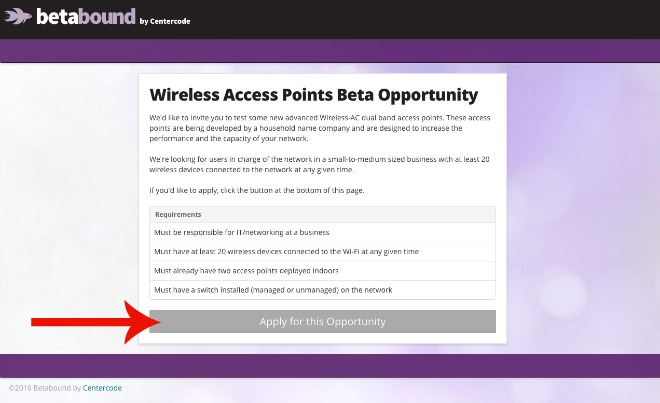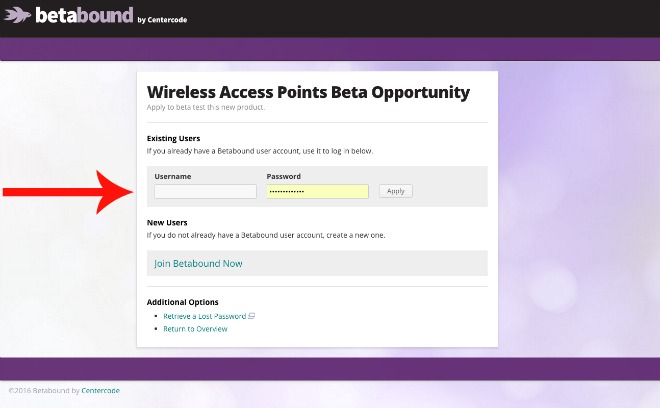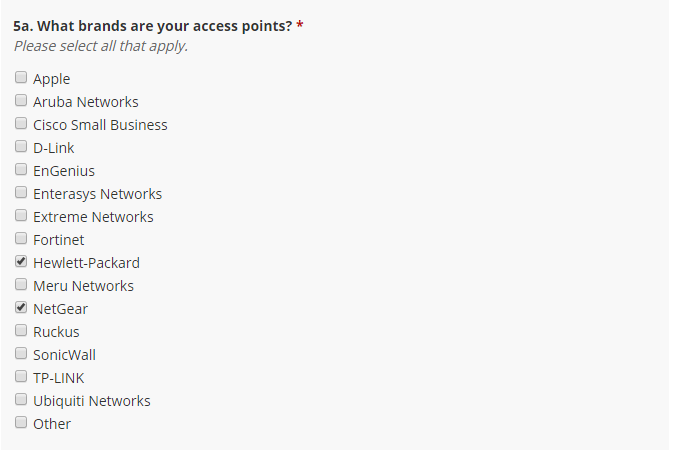How to Apply to a Betabound Beta Test: Part One
The first step after joining Betabound and customizing your user profile is to find a beta test you’d like to join. There are two ways to hear about new beta tests. One is through carefully curated beta testing opportunities we regularly email you. The second, is by regularly checking the Betabound homepage. Once you’ve found a beta test that interests you, it’s time to apply.
Some beta tests listed on the Betabound homepage don’t require a formal application process. However, all tests that are run by Centercode do (aka private Betabound Exclusives). If you are trying to join a beta test we emailed you about or was marked as a Betabound Exclusive on our homepage, there will be a few requirements you have to meet to be in the test.
Our private Betabound Exclusive applications only take a few minutes and help us find the exact mix of testers our clients are looking for to test their products.
To help you navigate the application process and increase your chances of getting accepted, we’re releasing a two-part series that will walk you through the application process. This week we’ll be showing you how to start the application process, as well as fill out the multiple choice portion of the qualification survey.
Applying for a Beta Test
You can apply for a beta test through the test’s landing page. This page describes the product and the basic qualifications we’re looking for in our applicants. You can reach the landing page by either clicking on the link in the email we sent yo, or by clicking on the “Apply to Beta Test” button on the opportunity on the Betabound homepage.
Once you’re on the landing page, take a moment to read through the description and qualifications to ensure that you meet the basic requirements. If you qualify and the test sounds interesting, click on the “Apply for this Opportunity” button at the bottom of the page.

If you aren’t currently logged in, you’ll be asked to do so.

Now you can begin the application survey. An application survey is made up of a handful of multiple-choice questions that are designed to help our beta team select the right types and breakdown of testers for particular test.
Answering Multiple Choice
You need to answer each question as honestly as possible. Sometimes new beta testers try to give answers to survey questions they think a beta manager might want to hear, believing this will improve their chances of being selected. While it may sometimes seem like there is a “right” answer when you read a question — don’t be so sure.
For example, qualification surveys can sometimes ask you if you own a certain type of product. In a situation like this, it’s easy to assume they’re looking for applicants who answer “yes”, when beta managers could actually be looking for individuals who don’t have experience with the product to give a fresh perspective. You can never really guess what a company might be looking for.

An application survey will also include a question with a list of options where you can check all that apply to you. This could be another sitation where it’s tempting to check all the options to cover your bases, but remember that all applications are reviewed by our team. If a beta manager comes across an application where all the options are checked, they might doubt your sincerity, so only select the answers that truly apply to you.

Applying for a beta test can feel intimidating at first. If you’re not used to applying for beta tests, it’s easy to worry about choosing the wrong answer. Those experienced in beta testing would tell you nothing is further from the truth. The goal of applying for a beta test is not just about getting accepted, but about making sure the test is a good match for you.
You won’t be accepted to every test you apply for. However, if you focus on being thorough in your responses and answering honestly, we’re confident you’ll be accepted to the right test when the time comes. If you found this helpful, stay tuned for part two next week that will focus on filling out the written part of a qualification survey.